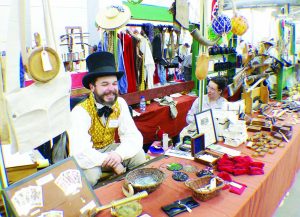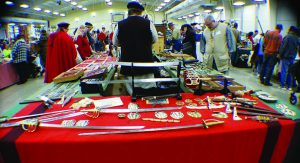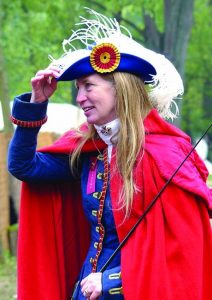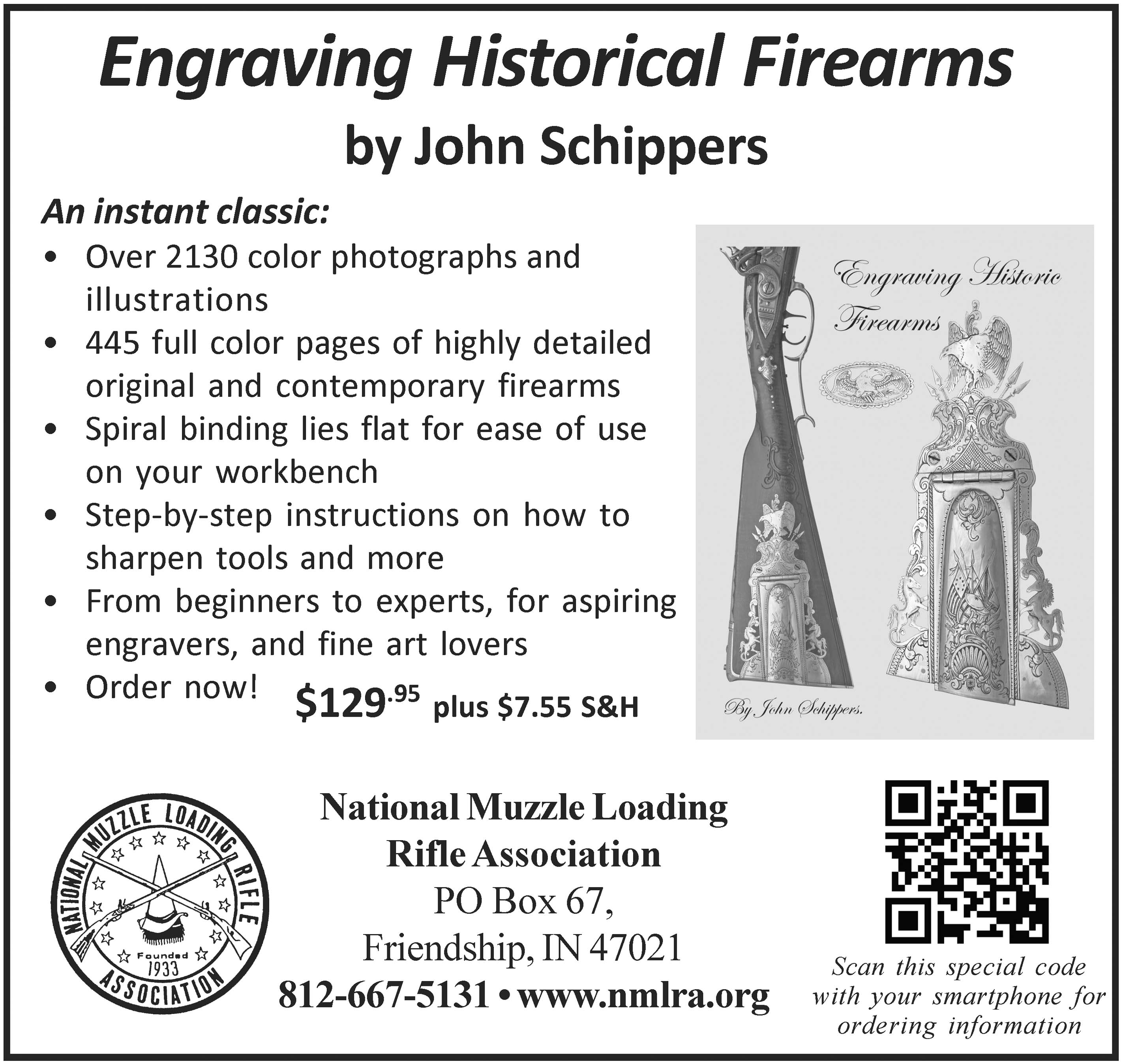by James C. Fulmer | Past President, NMLRA

Nathaniel Logsdon, owner of Taylor Rose Historical Outfitter, will be at Kalamazoo.
“The Feminine Frontier: Well Behaved Women Seldom Make History,” is the theme of the 42nd Annual Kalamazoo Living History Show which will be held March 18-19. The show is held at the Kalamazoo County Fair Grounds, Kalamazoo, MI, and is the largest indoor juried show in the Midwest devoted to living history and accoutrements. The show has pre-1890 original or reproduction living history supplies, accoutrements and related crafts. It attracts more than 10,000 visitors with over 270 dealers selling all the supplies you will need for this year’s upcoming events. I learned if you can’t find it at the Kalamazoo show, you probably don’t need it.
Many people come to this event not just for muzzleloading and reenacting supplies, but for the seminars — and with this year’s theme, I am sure it will be interesting. This year the “Living History Show “promises to explore a wide range of historical and modern day women from indentured servants of colonial times, Native women, to present day women who are involved in the “Living History and Shooting Sports.”
During the show I can usually be found at the National Muzzle Loading Rifle Association’s booth rifling a barrel on an 18th century style rifling machine. I usually start a new barrel at this show every year and finish it at the NMLRA’s Fort Roberdeau event in Pennsylvania, during the month of October. The barrel is used across the country for demonstration purposes. Over past the years the finished rifle barrel has been auctioned off or raffled off or built into a rifle and sold to help support NMLRA events. We have rifled .45 cal., .50 cal., .54 cal., and this last year was my first attempt at a .62 cal. Yeager barrel. So stop by if you are in Michigan and visit us at the NMLRA booth. For more information about the Kalamazoo show, go online to: KalamazooShow.com.

One of the many treasure rooms at the Kalamazoo Living History Show.
The list of women who have made history and who are making history just in our muzzleloading and living history events is endless. Many times they are overlooked for their achievements and accomplishments. There is more and more research being done and with the age of computers their names are coming more and more to light.
Margaret Cochran Corbin is one of the many famous women of the American Revolution. She was born in Franklin County, PA, on November 12, 1751. She was orphaned by the age of 5 when an Indian raid killed her father and her mother was taken captive never to return. She and her brother were adopted and raised by their uncle.
When Margaret was 21 years old in 1772, she married John Corbin. The two were only married a few years before the American Revolution erupted and John joined the Continental Army. Instead of staying home Margaret left with her husband, becoming a “camp follower” like so many other women did at the time. Camp followers would earn money by cooking and doing laundry for the soldiers. She also helped take care of the sick and wounded. They also watched the men do their artillery drills and probably learned a lot from just watching.
John and Margaret Corbin found themselves stationed at Fort Washington, NY. Fort Washington is at the northern end of Manhattan Island on high ground built directly across from Fort Lee on the Hudson River. On November 16, 1776, the Fort was attacked by Hessian Lieutenant General Wilhelm von Knyphausen, with a force of 3,000 Hessian mercenaries and 5,000 British soldiers who laid siege against Fort Washington.

Leslie Martin Conwell, CEO/Owner of the Kalamazoo Living History Show, dresses for the occasion.
That morning it is said that Margaret dressed as a man and joined her husband to help load and fire one of the many cannons in defense of the Fort. John was assisting on the cannon until the gunner was killed and then he took command of the cannon. Then he was killed and without hesitation Margaret took command of the cannon and continued to load and fire. Throughout the morning the British and Hessians met stiff resistance from both the cannons and from the riflemen at long range who were part of the defense of the fort.
Margaret was severely wounded by grapeshot which tore through her left arm nearly severing it and received wounds to her left breast and jaw. She was unable to use her left arm for the rest of her life. Other soldiers moved her to the rear where she received first aid. With their overwhelming odds and the help of a traitor, the British took the Fort.
Two weeks earlier, one of the American officers, William Dermont, who was stationed at the fort, deserted and gave information about all of the defenses of the fort including cannon locations and troop placements to the British. William Dermont was considered one of the first traitors in the American Revolution and his treason contributed to General Knyphausen’s victory at Fort Washington.
After she recovered, Margaret Corbin struggled financially. In 1779, the Continental Congress granted her a pension, “half the pay and allowance of a soldier in service” due to her distinguished bravery. She joined the Invalid Regiment at West Point where she aided the wounded until she was discharged in 1783. She died near West Point, NY, before she reached her 50th birthday.
In 1926, the Daughters of the American Revolution had her remains moved from an obscure grave along the Hudson River to West Point where she was buried with full military honors. Near the place of the battle of Fort Washington, in Fort Tryon Park in New York City, a bronze plaque commemorates Margaret Corbin “as the First American woman to take a soldier’s part in the War for Liberty.”
There are so many terrific stories that need to be retold and need to be kept alive for future generations. The National Muzzle Loading Rifle Association needs your help in retelling stories and promoting the muzzleloading era through your membership. Right now the NMLRA is running a membership special so more people can receive the Muzzle Blasts magazine and membership benefits, and learn more about the muzzleloading shooting sports and our rich history. If you or your daughter or granddaughter fit into this year’s theme at Kalamazoo “The Feminine Frontier: Well Behaved Women Seldom Make History,” you need to sign them up at NMLRA.org.




